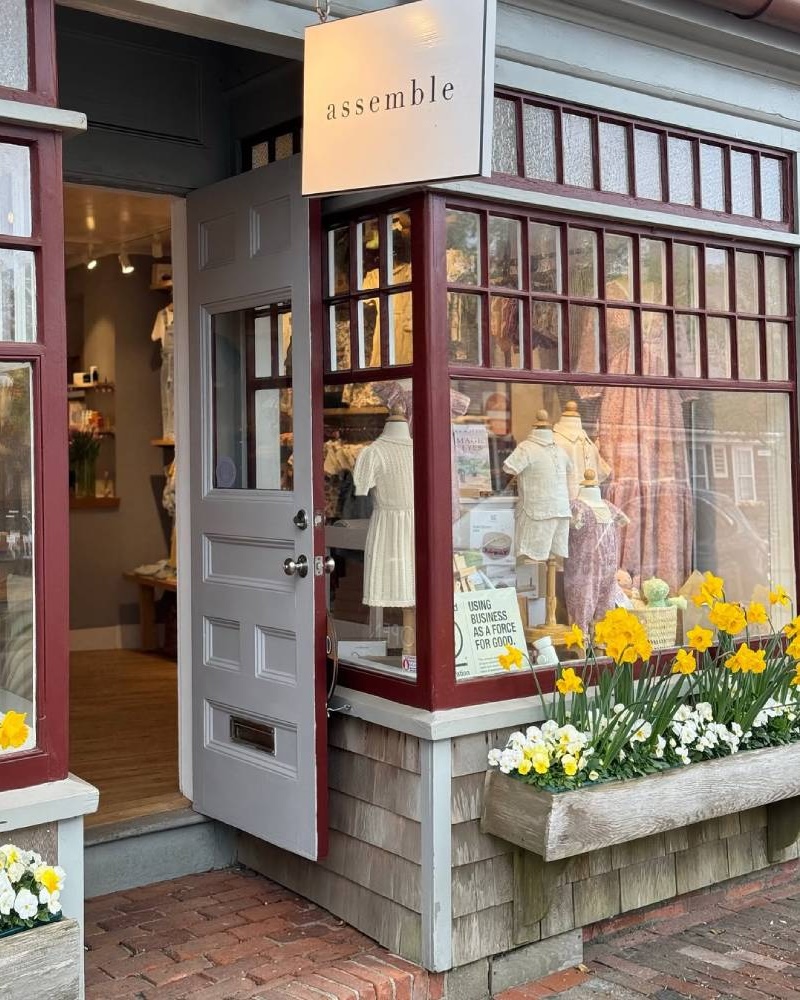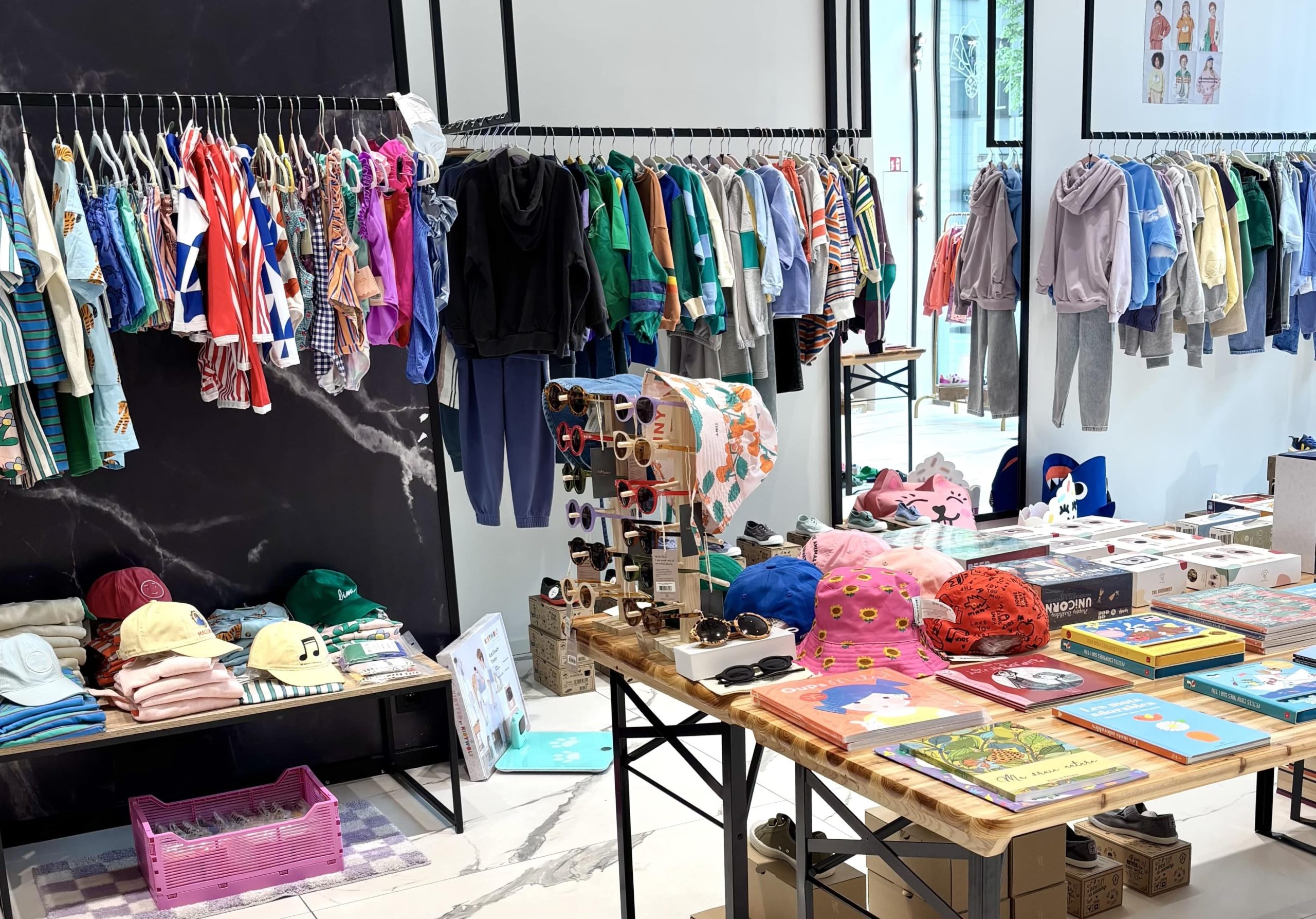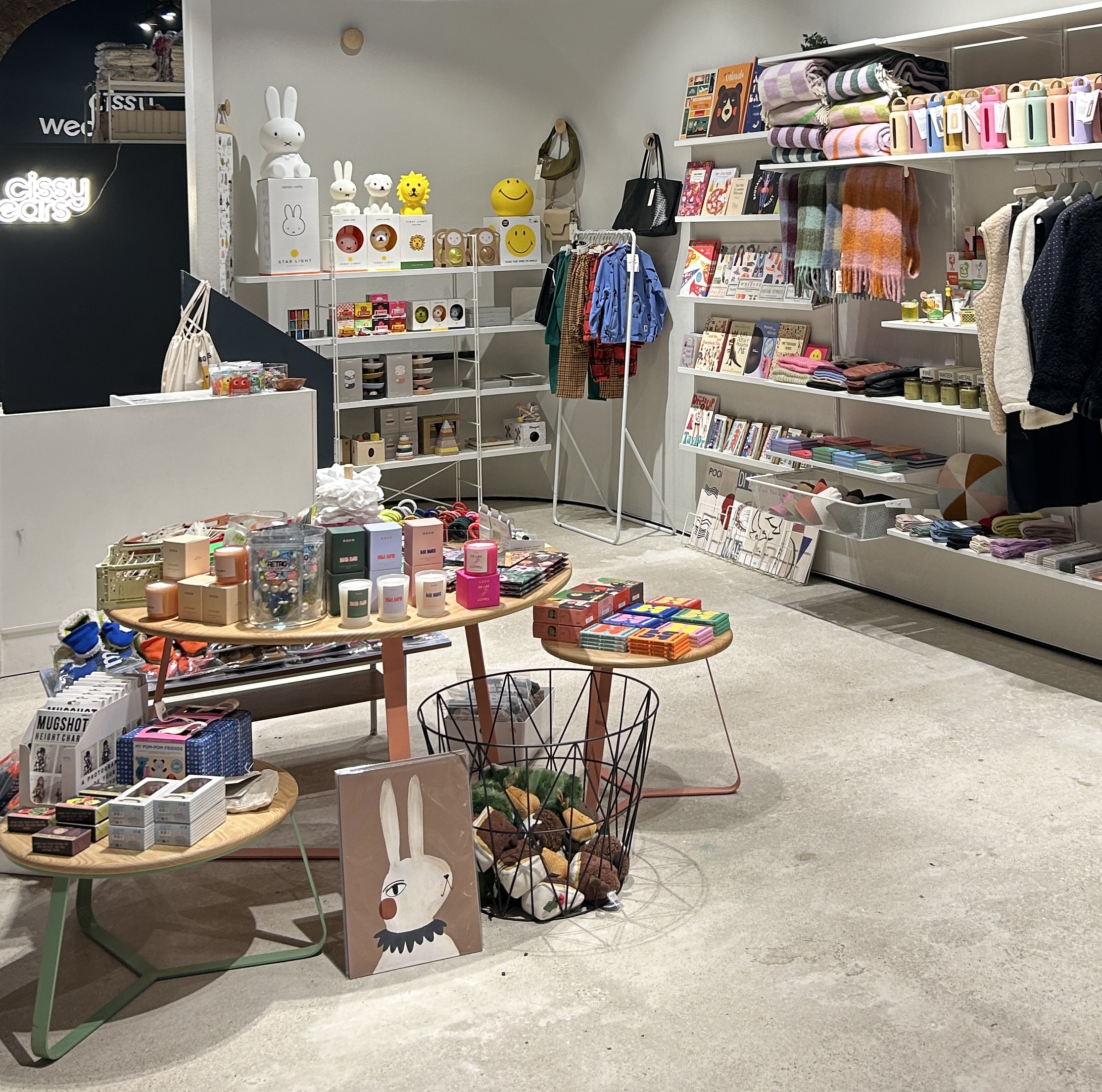To complete our analysis of the state of sustainability within the kid’s market this Earth Week, we turned to buyers to discuss sustainability for kid’s retailers.
Incorporating sustainability for kid’s retailers can look different, but there are common themes across all of them. Just like the brands we interviewed earlier this week, these buyers feel it’s their responsibility to be as sustainable as possible.
We asked eight buyers from around the world how they incorporate sustainability into their business models, how they communicate on sustainability to their customers, if it’s a point that drives sales in their store, how they talk about price, and what they believe the consumer’s mindset is shifting towards. To underline several of these points, we also spoke with experts from magazines, forecasting agencies, and a press and influence agency to get a global perspective of shifts in consumer behaviors. Let’s keep learning about the sustainability initiatives at work in our international community!
Of course, one of the key ways to add sustainability for kid’s retailers is to curate a selection of sustainable brands. “We focus on sustainable brands because we want every choice in our store to support both families and the planet,” said founders Penny and Frank of the concept store Little Wonders in Taiwan. With two sons of their own, they started their store precisely to provide the best for children. The founder of the online retailer Little Blueberry Kids, Parul, agrees, saying “It was an obvious choice for us to only work with responsible brands. We wanted to do better and make a positive impact on the environment”.
When choosing brands, these retailers are all especially interested in transparency. “Transparency is key. Things like where materials are sourced, how products are made, the certifications they hold, or even details about packaging all help tell a more complete story,” said Nicola from Cissy Wears in London. “We prioritize working with independent labels that are transparent about their processes, use responsibly sourced materials, and produce in small batches,” she continued. Yasmin from Cookie Dough in Lebanon agreed. She added there should be more transparency on who is making products, notably the conditions and where they are located. Penny and Frank from Little Wonders look closely into certifications and sourcing information. They said that sharing photos of production and stories from the makers can add a lot of trust.
Laurence from Little Dudes in Belgium notes that smaller brands sometimes can’t afford certifications. “In these cases, it’s extremely important for us to have concrete information on where the products are being made, in what conditions, and with what materials,” she said. Meris, the co-founder and creative director of Manymoons, underlined this point, saying that 3rd party certifications can be tricky. Seeing brands visit factories and introduce the human aspect of their supply chain can make a big difference for her.
For Studio Play in Belgium, the key to their brand selection is asking a lot of questions. As they’ve broadened their offer from being exclusively products made from recycled materials, they’ve been sure to ask about where products are made and the materials they’re made with. Liesbeth, the store’s co-founder, says that they’ve even ran into brands that will say the “right” answer, but then can’t provide further information. The problem of greenwashing drives her and the Studio Play team to ask a lot of questions. They always want to be sure the brands they work with are truly doing what they say they are.
Sustainability for kid’s retailers doesn’t stop with the brands they choose for their selection. They incorporate sustainability into every aspect of their business. Studio Play offers a truly exceptional example of this. They have solar panels on the store’s roof to reduce their energy consumption. They use the heat and air conditioning sparingly, preferring to ask their staff to wear an extra layer when necessary to avoid needless energy consumption.
When shopping online, customers have the option for free in store pick ups or to pay a little less for designated pick up points, rather than paying to have products delivered directly to them. By making these options more cost-effective for customers, Studio Play reduces their carbon footprint. When they fulfill online orders, Studio Plays uses boxes and shipping materials from brand deliveries that they’ve saved, as well as recycled plastic bags that have two tape strips so that customers can reuse them if they decide to send an item back. These plastic bags are also recyclable and biodegradable.
“We try to focus on all these things in every step of the business,” Liesbeth told us. The list goes on with the ways Studio Play makes their store sustainable. Every move they make is thoughtfully considered.
 Stijn and Liesbeth, co-founders of Studio Play
Stijn and Liesbeth, co-founders of Studio PlayManymoons is another prime example. “At our assemble store, we only adopt current season styles made of natural materials. This way, we can responsibly manage the garment through its entire lifecycle. Online through Manymoons, we help brands sell through leftover inventory or deadstock. Our circular giveback program on both channels ensures every product is utilized to its full potential,” Meris explained. By having a physical space dedicated to the current season and their online shop that offers customers the option to rent or buy new or preloved garments, Manymoons takes responsibility for every product they’re putting into the market. Little Blueberry Kids also has a circular platform integrated into their website. This allows customers to send back used products they no longer need.
“We take a 3 fold approach when it comes to sustainability,” said Yasmin from Cookie Dough. “From the brands we choose, to the messages we convey to our clients and the way we import and sell, we are focused on doing so sustainably,” she continued. Yasmin focuses a lot on education when it comes to sustainability. She is dedicated to educating her local community about how to shop more sustainably and make their homes more sustainable. “Because we’re in a country where resources are limited and there’s always a crisis, we can’t afford not to be sustainable,” she explained. Yasmin feels a social responsibility to educate her community through the close relationships she’s built with her customers.
 Manymoons’ assemble store
Manymoons’ assemble storeAt Cissy Wears, sustainability is woven into everything they do, too. “We minimise waste, reuse shipping materials, and aim to make mindful choices that align with our values,” Nicola explained. For Penny and Frank from Little Wonders, one of the key ways they incorporate sustainability in their store is by donating 1% of their revenue to support children’s education and local community development. “These partnerships allow us to amplify impact and inspire our customers to be part of something meaningful,” they told us.
“On a logistical level, I try to limit waste,” said Laurence of Little Dudes. Having only been in business for four years, she says she’s still learning new things every day, and trying to improve her practices step by step. Like her fellow retailers, Dalia, the Senior Vice President of Merchandising at the online retailer Maisonette, sees it as their responsibility to incorporate sustainability into their business model. “By weaving it into our product selection, operations, education, and community, we’re creating a platform where parents can shop with peace of mind. They know they’re making better choices for their children and the planet,” she said.
An interesting point in terms of sustainability for kid’s retailers brought up by Liesbeth from Studio Play was the question of webshops. “It’s hard to say that you’re a sustainable company when you have an online shop, to some extent,” she said. Though you can incorporate sustainability through the shipping materials you use and try to ship in one package rather than multiple, the biggest problem she has identified is consumer behavior.
Liesbeth pointed out that today, a lot of online shoppers are buying less thoughtfully. They place orders and then return a majority of what they bought. This is especially easy in the European Union, where there is a 14 day grace period. The EU government argues that since customers didn’t see the product in person, they have 14 days to return it at no cost to them. But in reality, there is a cost. There are emissions from the delivery truck that now needs to take that return back to the store. Packing materials are being used again, and someone has to process the return at the store.
Liesbeth thinks the government could help shift this behavior by returning some of the responsibility to consumers. Adding a cost for returning products could encourage change, and make customers more thoughtful when making online purchases. The responsibility would then be shared by customers and retailers, rather than giving it all to retailers.
Tiphaine, the founder and director of the press and influence agency, Kidding, and the company’s head of PR, Jean-Hugues, underlined this point. “Websites and social media allow retailers to connect with customers from around the world. Shipping these products to individuals represents a growing toll on our environment and our future asphyxiation,” they explained.
Sustainability for kid’s retailers can be communicated in a variety of ways within stores and eshops. On their online store, Studio Play writes the complete story behind each product. This is an exceptional dedication given the number of skus they carry, but one they feel is important. This offers their customers the opportunity to read all about the brand’s practices if they are interested. Meanwhile in store, Liesbeth, her fellow co-founder Stijn, the store’s new owner Marie, and their staff are always there to answer questions. They especially focus on sharing interesting information about a product’s sustainability when a customer is making a purchase.
Nicola from Cissy Wears does the same, with a focus on communicating in a clear, but approachable way. “We try to make sustainability feel accessible rather than overwhelming. It’s about progress, not perfection,” she said. At Cissy Wears, they use product descriptions, social media, and in-store conversations to share the stories behind the brands.
Little Wonders follows this model for communication as well, writing blog articles, thorough product descriptions, and using in-store displays and social media. As an online retailer, Little Blueberry Kids focuses primarily on having educational materials for their customers to look through.
 Little Dudes
Little Dudes
Clearly, sustainability for kid’s retailers like these is important. But what about their customers? The results are mixed. Some retailers are observing it to be a selling point, while others find it’s a great ‘plus’ for purchases.
“Many of our customers are genuinely interested in sustainability and increasingly looking for products that align with their values. It’s definitely a selling point,” said Nicola from Cissy Wears. Little Blueberry Kids has found this as well, with Parul saying that people are interested in sustainable, eco-friendly products, and that it drives interest for the selection they carry. “They’re people like us. They want to reduce waste and make a positive impact while shopping for their little ones,” she told us.
Penny and Frank from Little Wonders find that parents are especially interested in sustainability. They help their customers make informed decisions by writing blog articles that share the stories behind the brands they curate. This way, their clients can learn, reflect, and shop with intention. At Manymoons, both in store and online, they’ve built a loyal returning customer base on the trust that they provide access to unique, sustainable brands. “They love the benefits of our giveback program,” said Meris. “Being a circular retailer has definitely allowed us to cultivate a likeminded community of brands and customers”.
 Cissy Wears
Cissy WearsFor Little Dudes and Cookie Dough, the clientele seems to be happy to find out a product they love is sustainable, but it’s not the driving factor for why they’re purchasing it. “Certain clients come just for our sustainable selection, others fall in love with the style and discover when making their purchase that it’s eco-responsable,” said Laurence from Little Dudes. “I think that for a lot of them, it’s really a plus. It’s not exactly their key criteria when making a purchase,” she concluded.
Yasmin from Cookie Dough finds customers are very concerned about quality, less so about sustainability. But, she notes, they’re concerned about how products affect their health, that they’re nontoxic or made with organic materials, all of which ties into sustainability, even if her customers aren’t labeling it under that umbrella. “For our clientele, they trust our choices. They know we’ve done our research, so they don’t have to,” said Yasmin.
We wondered when sustainability for kid’s retailers started becoming important. For Grethel, the founder of the blogzine Design Hunger, she’s observed sustainability play the role of a bonus, rather than a selling point over her past 15 years working in the children’s industry. Now, she has seen that completely change. “Today, it’s almost a given: parents expect brands to be sustainable,” she explained. Tiphaine and Jean-Hugues from Kidding agreed that sustainability has been on the upswing for the past 15 years. Following several scandals and catastrophes like the Rana Plaza disaster in 2015, the desire for more virtuous fashion notably accelerated.
Erin, the Head of Kids at WGSN, said that sustainability started emerging as a selling point in the kid’s market as early as the 2000’s. She notes it has gained significant traction in recent years, aligning with a broader societal shift towards sustainability.
Nicole, Childrenswear Trend Director at Future Snoops, points out the problem of greenwashing. “As more and more brands became aware of sustainability’s selling point and parents’ concerns with their children’s health and safety, greenwashing became more and more of a problem,” she explained. She sees it as a selling point, but says any claims must be backed up with evidence.
On the contrary, Katie, the Owner of Pirouette, has been receiving feedback that sustainability is not the selling point. “Whilst it is a positive factor, it is not a primary consideration,” she said. “The feedback we have tells us that from a list of ‘sustainable, adorable, wearable, and affordable’, ‘sustainable’ still comes in last place when placed in order of importance,” Katie explained.
“Why is it so expensive?” is the most common question Laurence hears at Little Dudes. “One of the most frequently asked questions is ‘Why is this more expensive than…,’” agreed Nicola from Cissy Wears. There’s no question that well-produced items come at a premium. So when it comes to price and sustainability for kid’s retailers, how can they respond to customer’s questions?
“It’s easy to break down. Products that are produced in safe facilities that pay fair wages will cost more than those manufactured in environments that are not well managed and do not pay their workers adequately,” is how Meris from Manymoons sums it up. Laurence from Little Dudes emphasizes these points as well, putting a focus on the durability of well-made products. “A $12 legging that falls apart after two washes isn’t a good deal,” she explains. “I wish more people understood that lower prices often come at a hidden cost. Whether that’s unpaid labor, environmental damage, or poor quality materials that don’t last,” said Nicola from Cissy Wears. “While sustainable products may seem more expensive upfront, they reflect the true cost of making something responsibly”.
Little Wonders echoes these arguments as well, adding that these aren’t mass-produced goods, but products that have been made with care, fairness, and longevity. “The cost reflects fairness for the makers, the user, and the planet,” Penny and Frank said. Little Blueberry Kids tries to offer great sales to help make sustainable products more accessible. Yasmin from Cookie Dough focuses on longevity and the health benefits of avoiding fabrics that leach dangerous materials into children’s skin.
For Maisonette and Studio Play, they’ve found that customers who shop at their stores aren’t surprised by the price tag. “There is already an expectation from consumers that sustainable products come at a premium,” Dalia told us. Liesbeth echoed this sentiment, saying the clients that are drawn to Studio Play have respect for beautiful things that are made by people, and they’re willing to pay a price for that.
Grethel from Design Hunger says that, in general, price remains the biggest barrier. “Being sustainable costs more. While values are shifting, we still have work to do in changing purchasing behavior at scale,” she explained. Erin from WGSN agreed, noting that parents often prioritize affordability and style when shopping. Emma, Director of Sustainability at Future Snoops, pointed out that price and conscious consumption has dissipated the stigma around secondhand. “With inflation increasing and Gen Z becoming parents, families are embracing affordable, trend-led, secondhand items at scale,” she noted. This implies that price remains a key factor for parents.
For many of these retailers, sustainability has been incorporated since the beginning. We wanted to know what direction their clientele is heading, if they’re becoming more or less interested in sustainability. Cissy Wear’s Nicola said that with the current economic climate, some people are being a bit more cautious about spending. At the same time, she’s seeing awareness growing, with more people trying to make conscious choices when they can.
Little Blueberry Kids thinks there is still a lack of information and education, so while there’s a lot of interest, not everyone is completely convinced yet. Laurence from Little Dudes would agree, saying there is interest, but it’s still a ‘bonus,” rather than a selling point.
On the contrary, Penny and Frank from Little Wonders said “Sustainability is no longer a bonus. It’s becoming a baseline for trust”. Maisonette’s Dalia agreed, saying there is a marked shift in priorities for many families. “I think customers are expecting ethical production and even built in giveback/resale programs,” said Meris from Manymoons. She pointed out recent legislation in California that is raising expectations for sustainable practices. “It’s reallocating the responsibility of textile waste off consumers’ shoulders and back onto producers,” she explained.
“The mindset has clearly shifted towards ‘Buy less, but better,” said Grethel from Design Hunger. She continued by saying that customers are increasingly conscious of where and how products are made. She views the strong interest in second-hand shopping as a reflection of a deeper awareness of the environmental impact of our consumption habits.
Erin from WGSN agreed, saying that sustainability is increasingly a priority in purchasing decisions. “This is especially key with Gen Z parents who are well-informed about the climate crisis,” she continued, saying that these parents are more dedicated to investing in products that are kinder to the planet. “They are actively seeking out choices that reflect their values and contribute to a more sustainable future,” she said. In her opinion, the best way to sell sustainability is to make it a bonus. “Remember that even if consumers aren’t prioritizing sustainability, you should still reframe your products to incorporate it as the ‘AND’. For example, consider a backpack that’s appealing for its compact shape, AND it happens to be made with 100% recycled materials,” she explained.
“Human heath is emerging as a powerful consumer lever when it comes to sustainable kidswear,” said Emma from Future Snoops. “Children’s bodies are more vulnerable to extreme weather, which will further inspire a move away from synthetic kidswear to natural fibers that can help with temperature regulation,” she continued.
 Little Blueberry Kids
Little Blueberry KidsAccording to Tiphaine and Jean-Hugues from Kidding, the context of inflation has accentuated the importance of the resale market. As for their advice for retailers, they said “In 2025, retailers must be conduits for the values of the brands they offer. By sharing their brand knowledge with the end consumer, they convey the values and spread the news of the brand’s code of honor”.
“Be honest!” is Katie from Pirouette’s advice. “End-consumers who are interested enough to read about your sustainability credentials will be looking for you to be credible and engaged,” she explained.
Violaine from Marie Claire Enfants says that sustainability is no longer an argument, but a pre-requisite. She finds that one of the biggest challenges the industry faces in terms of sustainability is getting consumers to understand the cost of things – not just of responsible materials, but of fairly paid labor as well. “We need to educate the customers who think ‘organic’ is great, but too expensive,” she said.
As we said in our previous article, the journey towards sustainability is a continuous one. There are constantly new evolutions and shifts within the market. As buyers, brands, and consumers, we’re all on this journey together. Doing our best, offering what’s working for us, and brainstorming solutions to industry-wide challenges are the best ways for us to build a more sustainable future, together.
Thank you to all of these buyers for sharing their insights into sustainability for retailers, and the experts who offered their perspectives from a global view. If you haven’t already, read our first state of sustainability article about brands here.